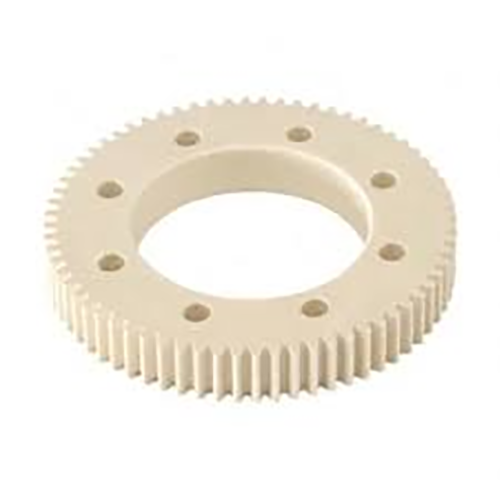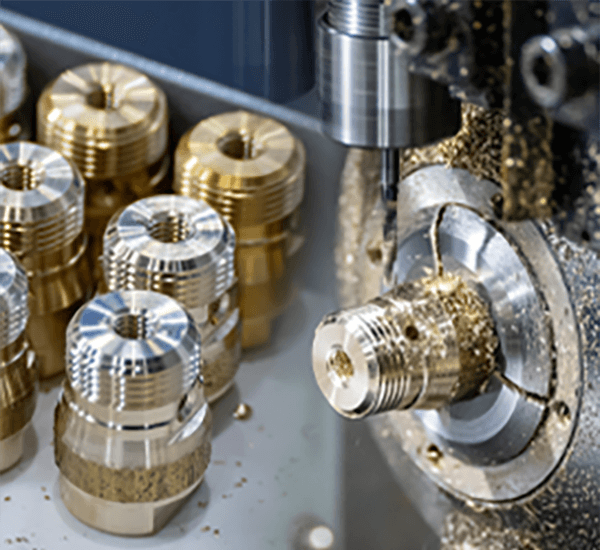
Meeting defined surface quality on a CNC-produced component is vital.
- Specification callouts prescribe the detailed finish for parts
- Surface notes typically employ Ra—arithmetic mean deviation—when specifying roughness
- Interpreting finish callouts is necessary to guarantee parts satisfy functional criteria
- Specified texture can change lubrication regimes, frictional forces, and endurance
- Right interpretation of surface notes ensures attainment of the sought condition
CNC Machining: A Definition of Precision

CNC-driven fabrication functions as a modern manufacturing method through automated code the equipment produces detailed patterns with tight tolerances.
- Programmed mills and lathes produce top-tier parts across material types
- Adaptable CNC processes fit the demands of aerospace, automotive, and medical markets
- CNC processes produce uniform parts with high repeatability over runs
From concept models to high-volume manufacturing CNC machining anchors industrial production
Comprehending CNC Machine Specifications
Interpreting CNC data often seems complex on first review
That said, foundational understanding plus a method lets you confront technical details
Commence with recognizing main metrics: spindle rpm, feed, precision, work volume, control system
Each characteristic modifies the machine’s effective performance.
For example a higher spindle speed is suitable for softer materials while a faster feed rate is essential for increased production.
Seeing these associations aids in selecting the correct machine for your use
Remember to consult the manufacturer's literature thoroughly.
Supplier manuals often give critical context and define technical language
Complete Overview of CNC Equipment
CNC machines are specialized computer-controlled systems used in manufacturing for precise and automated fabrication of various materials They interpret CNC code instructions to command cutting tools and motion.
- Representative CNC types cover milling tools, turning machines, routers, plasma cutters
- Cutting methods suit steels, plastics, woods, and layered composites
- Also CNC equipment offers quick turn prototyping and low-volume runs for innovators and labs
CNC Fundamentals and Principles
They demonstrate convergence of tight hardware tolerances and refined software control Versatile machinery employs programmed code to autonomously produce simple parts and complex assemblies Essential concept transposes digital designs into manufactured reality.
- Software-driven machining
- Digital design integration
It comprises controlled axis moves directed by programmed code Operators play a crucial role in selecting the appropriate cutting parameters monitoring the operation and ensuring the quality of the final product.
Significance of Surface Finish in CNC
Delivering planned surface condition during machining is necessary It significantly alters operational behavior and appearance Material selection, cutting strategy, and finishing steps all influence final texture.
Fine finishes raise resilience whereas rough profiles can restrict performance CNC machining processes offer a wide range of tools and techniques to achieve the specific surface finish for different applications.
- Such as employing varied cutter geometries |PCD tools|spindle rpm choices to produce target surface
- Secondary operations like sanding, grinding, or polishing boost finish
Appreciating the link between settings and surface quality helps achieve ideal finishes.
CNC Fundamentals: Operations and Uses
Precision production uses machine control software to shape parts from different material classes They execute coded toolpaths to create intricate parts repeatedly Knowing programming basics and tool selection secures better machining outcomes
Applications of CNC machining are incredibly diverse spanning numerous industries such as aerospace automotive manufacturing From aircraft parts to precision plastic molds, CNC creates complex high-quality items
How to Specify Surface Finish for CNC Parts
Accurate finish definition matters when machining parts with CNC It secures that the final item meets both functionality and looks Finish specifications are often expressed via the Ra roughness standard Shown in micrometers or inches, the measurement denotes typical roughness magnitude.
Evaluate both finish smoothness targets and the operational application before specifying

In practice smoother finishes help where exact fits and close tolerances are essential
Rugged finishes sometimes serve parts that need enhanced traction or grip
Apply clear finish annotations in technical drawings to state desired texture Provide the roughness average and detail supplemental processes or treatments needed.
Recall that well-defined roughness notes help ensure production success
Types of CNC Machines and Their Capabilities
Numerical control machining comprises numerous machine types engineered for diverse applications They pair with CAD software to translate designs into cutting commands for precise fabrication.
- Milling machines are renowned for their ability to remove material from a workpiece shaping it into complex geometries
- Grinders use abrasive wheels to finish and size parts to fine tolerances
- Waterjet cutters use high-pressure abrasive streams to cut diverse materials without thermal effects
Decision factors include the part’s material, feature complexity, and tolerance specifications Different CNC platforms supply distinct functionality valuable across industries including automotive and aviation.
Obtaining High-Quality Surface Finish with CNC
Attaining top-quality surfaces is critical in fabrication and CNC techniques facilitate that achievement Through careful tuning of feeds speeds and tool profiles operators manage chip formation and surface generation In addition top-grade tooling and adequate lubrication help generate finer surfaces Well-chosen cutting tactics plus careful setup empower manufacture of parts with exceptional surfaces.
Surface Finish Considerations in CNC Programming
Managing finish via CNC code is important to secure required surface properties Cutting parameter selection—feed, speed, tool geometry—controls surface finish Precise setting selection and effective coolant control support high-quality finishes.
- Plus regular inspection and maintenance of tools copyright finishing standards Besides what is meant by cnc machine that systematic tool upkeep and monitoring ensure sustained surface quality In addition periodic tool servicing and checks secure consistent surface quality
- To improve surface outcome account for material, roughness target, and application
- Employing simulation software can help visualize and fine-tune cutting parameters before machining reducing the risk of surface defects
- Also ongoing tool care and inspection support sustained finish reliability
